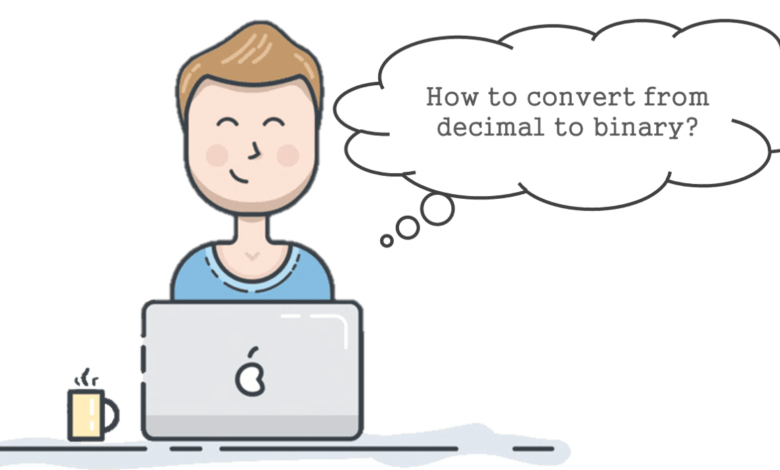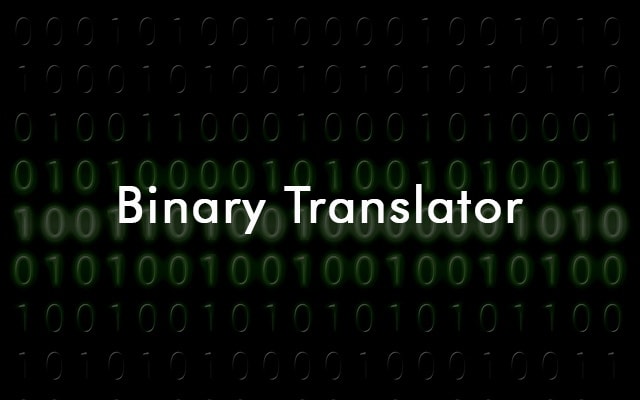
You probably have heard of the word ‘binary’, but do know what it means? The term refers to a computer language where all data is encoded in either 0’s or 1’s. This can be easily understood when you consider a light switch, there are only two states it can exist in, on and off. When the switch is on (1) the light is on, when it’s off (0) the light is off. In a sense you can consider this to be binary because it can only exist in two states.
When dealing with computers and technology in general it is important to be able to convert data into binary, or understand what the computer is telling you without having to do a lot of math conversions yourself.
With this in mind we chose ten online resources that can perform such conversions for you. For most people an understanding of Binary can be complicated. These ten tools are easy to use and will help you understand binary conversions in no time.
This is a free web application that can be used anytime with an internet connection. The webpage is quite simple but it features the most essential tools that people might need, such as converting from decimal to binary and vice versa, computing a number’s bit value, and determining if a string of symbols is a valid binary number.
Bit value is the power to which 2 must be raised in order for the result to equal a given decimal integer. For example, 10010 (2) = 10 (10), and 10100 (2) = 100 (100). A program that converts bits into decimal values is called a decoder or encoder.
This tool has a minimalist interface which focuses on functionality. It allows users to convert an entire file, so it may be used to batch process binary files for archiving or decryption purposes. It also features options for setting the output format, which might be necessary to suit specific purposes.
Decimal is also known as base 10 number system because it contains the numbers 0 – 9. The decimal number system uses 7 different symbols (0, 1, 2, 3, 4, 5, 6, 8 and 9) that are combined together to create a number. It’s widely used in everyday life and we often use it without even realizing.
On the other hand, binary is a base 2 number system and uses only two digits: 1 and 0 (in place of 1 and 0). This system is commonly used in computers because their electronic circuits only recognize those digits.
The first source is an ASCII to Binary conversion chart for quick reference by Rapid Tables. The code is made up of 1s and 0s where each digit represents a thing. It starts from 1 and goes up to the maximum which is 128. There are probably more bits that I leave it to you to find out. This website provides a reference for ASCII code which is helpful in learning programming languages.
The second source is a website that provides a conversion between decimal to binary. The website also has other less frequently used conversions for hexadecimal and octal. Decimal is one of the number systems which is why it is good to have an online reference where you can quickly find out how to convert it into different bases.
Upon visiting the website, you are given an option to either select a string of text or upload your own file for conversion purposes. Once you have selected your option, click on the “Convert text” button in order to get your results. This website is very easy to use because you only need to provide the input then press a button in order for it to process and generate the output results.
This website is very similar to the unit-conversion.info because you are given an option where you can either provide the input text or upload your own file for conversion purposes. Once you have inputted your data, it will generate the output results which you can view on the screen.
This website also provides an option where you can copy and paste your conversion into a word processing document (i.e. Microsoft Word) for further analysis purposes.
This tool is great for those who are more familiar with the decimal system as it converts text into the binary system. The first text box allows you to enter whatever you want it converted, while the second box is where you put in what it’s being converted from.
For example if I wanted to convert “10100101” I would write that into the ‘Ascii Text’ box and type ‘10100101’ into ‘Binary (Base 2)’. After hitting submit you will get the result of ‘1100101110’, which is exactly what I wrote!
This tool is great for advanced computer users, or people who like to understand more about how computers work with binary conversions. This tool gives you a detailed binary guide. The tool is easy to use, it provides you with the three states of binary numbers – zero, one or high voltage.
You can also see how these change depending on what’s being inputted into the system, for example if I input “100” I get an output of “-0+0i”. I know that this means that 100 in binary is ‘-0+0i’. If I input “1100101110” the output changes to “1.111110111100001”. This shows me how those numbers change when different values are being used.
This tool is an easy way to convert a decimal number to binary and vice versa. Type your number in the text box and hit the “convert” button; this will show the result in the other text boxes such as decimal number, binary number and hexadecimal number.
As an example: type “19” in the text box, click the convert button which will give the result as “1101” in decimal, binary and hexadecimal numbers.
The tool also provides the option to copy the decimal, binary or hexadecimal form of number.
This tool provides three methods to convert numbers: decimal, hexadecimal and binary. Type your number in the text box and hit “convert” button; this will show the result of the conversion in the other text boxes such as decimal number, hexadecimal and binary number.
As an example: type “19” in the text box, click the convert button which will give the result as 29 in decimal, 2F in hexadecimal and 10111 in binary.





